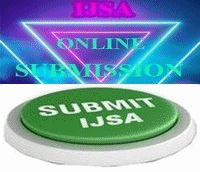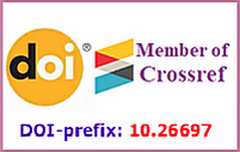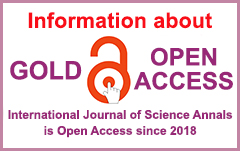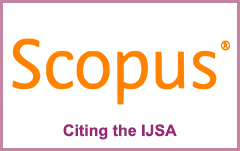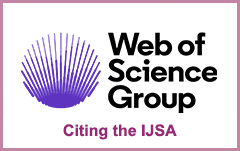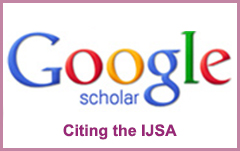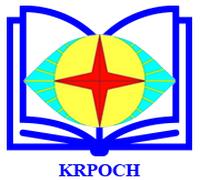Sensorimotor Criteria for the Formation of the Autonomic Overstrain of the Athletes’ Cardiovascular System
Romanchuk O. P. 1, Guzii O. V. 2
| 1 Odesa Medical Institute of International Humanitarian University, Ukraine 2 Ivan Boberskiy Lviv State University of Physical Culture, Ukraine |
Abstract
Background and Aim of Study: Determination of sensorimotor function is an important area of psychophysiological features study of the athletes’ body, which are essential for the analysis of cognitive processes, assessment of the central nervous system functional state, sensory sensitivity, development of motor skills, psychophysiological and neurophysiological parameters of brain. The aim of the study: to define the changes of indexes of the central regulation of sensorimotor function of highly skilled sportsmen at forming of the cardiovascular system overstrain.
Material and Methods: On results research of the cardiovascular system with the use of spiroarteriocardiorhythmography before, after load and a next morning in 19 sportsmen of men, which the overstrains of the cardiovascular system was forming, were determine: at 10 – on a sympathetic type, at 9 – on a parasympathetic type. In parallel was determination of index of switching of central settings (SCS) which received from data of research of the sensorimotor system with the use of device the “Computer motion meter”.
Results: Right after intensive physical activity the meaningful acceleration of SCSl (p<0.05) and meaningful deceleration of SCSr (p<0.05) is marked at an overstrain on a sympathetic type, and also meaningful deceleration of SCSl (p<0.05) and meaningful acceleration of SCSr (p<0.01) at an overstrain on a parasympathetic type. In the period of recovery deceleration of SCSl and SCSr (p<0.05) at a sympathetic overstrain, and also stability of index of SCSl by comparison to afterload and meaningful dynamics of SCSr (p<0.05) is marked at a parasympathetic overstrain.
Conclusions: At a sympathetic and parasympathetic overstrain the characteristic asymmetric changes of indexes of SCS that can testify to the primary flow of ergotrophic and trophotrophic processes in the organism of sportsmen are marked.
Keywords
sensorimotor regulating, overstrain of the cardiovascular system, sportsmen, physical load, sympathetic and parasympathetic overstrains.
References
Bellenger, C. R., Fuller, J. T., Thomson, R. L., Davison, K., Robertson, E. Y., & Buckley, J. D. (2016). Monitoring athletic training status through autonomic heart rate regulation: A systematic review and meta-analysis. Sports Medicine, 46(10), 1461–1486. doi:10.1007/s40279-016-0484-2
Berdychevskaia, Е. М., Troiskaia, А. S., & Fokin, V. F. (Eds.). (2009). Rukovodstvo po funktsionalnoi mezhpolusharnoi assimetrii. Funktsionalnye assimetrii i sport [Guide to functional interhemispheric asymmetry. Functional asymmetries and sports]. Мoscow: Scientific world. [in Russian]
Bezrukikh, M. M., Kiselev, M. F., Komarov, G. D., Kozlov, A. P., Kurneshova, L. E., Landa, S. B., … Pivovarov, V. V. (2000). Age-related features of the organization of motor activity in 6- to 16-year-old children. Human Physiology, 26, 337–344. doi:10.1007/BF02760196
Boloban, V. V. (2006). Sensomotornaia koordinatsiia kak osnova tekhnicheskoi podhotivki [Sensorimotor coordination as a basis for technical training]. Science in Olympic sports, 2, 96–102. [in Russian]
Brahina, N. N., & Dobrohotova, T. A. (1988). Funktsionalnye asimetrii cheloveka [Functional asymmetries of a person]. Мoscow: Medicine. [in Russian]
Chermit, K. D., Shakhanova, A. V., & Zabolotniy, A. G. (2014). Sportivnyi laterostressa (nauchnaya gipoteza) [Sports lateral stress (scientific hypothesis)]. Theory and Practice of Physical Culture, 11, 24–26. [in Russian]
Сhikurov, A. I, Fedorov, V. I., Voinich, A. L, & Khudik, S. S. (2016). Directed asymmetric power action as effectivization factor in sprint coaching. Journal of Physical Education and Sport, 16(4), 1287–1292. doi:10.7752/jpes.2016.04204
Grabinenko, E. V., & Zhurba, V. V. (2017). Osobennosti funkcionalnoj asimmetrii mozga i kojefficienta lateralizacii sportsmenov v zavisimosti ot specializacii [Features of functional asymmetry of the brain and the coefficient of lateralization of athletes depending on the specialization]. Zdorove cheloveka, teorija i metodika fizicheskoj kultury i sporta – Human Health, Theory and Methods of Physical Education and Sports, 3(6), 22–34. Retrieved from https://journal.asu.ru/zosh/article/view/2880 [in Russian]
Craig, A. D. (2005). Forebrain emotional asymmetry: A neuroanatomical basis? Trends in Cognitive Sciences, 9(12), 566–571. doi:10.1016/j.tics.2005.10.005
Crollen, V., Albouy, G., Lepore, F., & Collignon, O. (2017). How visual experience impacts the internal and external spatial mapping of sensorimotor functions. Scientific Reports, 7(1), 1022. doi:10.1038/s41598-017-01158-9
Fokin, V. F., Boravova, A. I., Galkin, N. S., Ponomarev, N. V., & Shimko, I. A. (2009). Statsionarnaia i dinamacheskaia organisatsiia funktsionalnoi mezhpolusharnoi assimetrii [Stationary and dynamic organization of functional interhemispheric asymmetry]. In V. F. Fokin (Ed.), Rukovodstvo po funkcionalnoj mezhpolusharnoj asimmetrii – Guidelines for functional interhemispheric asymmetry (pp. 389–428). Moscow: Scientific world. [in Russian]
Guzii, O. V., & Romanchuk, A. P. (2018). Determinants of the functional state of sportsmen using heart rate variability measurements in tests with controlled respiration. Journal of Physical Education and Sport, 18(2), 715–724. doi:10.7752/jpes.2018.02105
Guzii, O. V. (2019). Zminy typiv avtonomnoi rehyliatsii sertsevoho rytmu za vplyvu intensyvnykh fizichnykh navantazhen [Changes of types of autonomous regulation of a heart rhythm under the influence of intense physical]. Naukovyi chasopys Natsionalnoho pedahohichnoho universytetu imeni M. P. Drahomanova – Scientific Journal of the National Pedagogical Dragomanov University, 10(118), 43–49. [in Ukrainian]
Guzii, O. V., Romanchuk, A. P., & Мahlovanyy, A. V. (2020). Sensomotorni pokaznyky yak kryterii vplyvu intensyvnykh fizychnykh navantazhen na orhanizm sportsmena [Sensorimotor indicators as criteria of the intense physical loads influence on the athlete’s body]. Ukrainskyi zhurnal medytsyny, biolohii ta sportu – Ukrainian Journal of Medicine, Biology and Sports, 5(3), 351–358. doi:10.26693/jmbs05.03.351 [in Ukrainian]
Herpin, G., Gauchard, G. C., Lion, A., Collet, P., Kellerc, D., & Perrin, P. P. (2010). Sensorimotor specificities in balance control of expert fencers and pistol shooters. Journal of Electromyography and Kinesiology, 20(1), 162–169. doi:10.1016/j.jelekin.2009.01.003
Korobeynikov, G., & Korobeynikova, L. (2014). Functional brain asymmetry and cognitive functions in elite wrestlers. International Journal of Wrestling Science, 4(1), 26–34. doi:10.1080/21615667.2014.10878997
Kuznetsova, S. M., Sychov, О. S, & Еgоrоvа, М. S. (2017). Klinicheskie aspekty variabelnosti ritma serdtsa u patsientov s dystsyrkuliatornoi entsefalopatiei (оbzor) [Clinical aspects of cardiac rhythm variability in patients with discirculatory encephalopathy (review)]. Zhurnal nevrolohii im. B. M. Mankovskoho – The Journal of Neuroscience named after B. M. Mankovskyi, 5(1), 79–85. [in Russian]
Melnyk, Yu. B., & Pypenko, I. S. (2018). Training of future specialists in higher education institutions. International Journal of Science Annals, 1(1-2), 4–11. doi:10.26697/ijsa.2018.1-2.01
Melnyk, Yu. (2019). The influence of educational, physical cultural and healthy work on the formation of the health culture of master’s students. Journal of Physical Education and Sport, 19(1), 219–226. doi:10.7752/jpes.2019.s1033
Mittly, V., Németh, Z., Berényi, K., & Mintál, T. (2016). Mind does matter: The psychological effect of ankle injury in sport. Journal Psychology & Psychotherapy, 6(4), 278–284. doi:10.4172/2161-0487.1000278
Moskvyn, V. A., & Moskvyna, N. V. (2015). Individualnye razlichiya funktsionalnoy asimmetriy v sporte [Individual differences in functional asymmetry in sports]. Nauka v olimpijskom sporte – Science in Olympic Sports, 2, 58–62. [in Russian]
Nicolas, M., Vacher, P., Martinent, G., & Mourot, L. (2019). Monitoring stress and recovery states: Structural and external stages of the short version of the RESTQ sport in elite swimmers before championships. Journal of Sport and Health Science, 8(1), 77–88. doi:10.1016/j.jshs.2016.03.007
Noskin, L. A., Krivosheeva, V. F., Kuchma, V. R., Rumyantseva, A. G., Noskin, V. A., & Komarov, G. D. (2005). Pedagogicheskaya sanologiya [Pedagogical sanology]. Moscow: МІОО. [in Russian]
Oppenheimer, S. M., Gelb, A., Girvin, J. P., & Hachinski, V. C. (1992). Cardiovascular effects of human insular cortex stimulation. Neurology, 42(9), 1727–1732. doi:10.1212/wnl.42.9.1727
Pankova, N. B. (2003). Primenenie kompiuternogo izmeritelia dvizhenii KID-3 dlia issledovaniia psikhomotornoi koordinatsii i sensomotornoi reaktivnosti bolnykh zabolevaniiami pozvonochnika [Use of a computer motion detector KID-3 for the study of psychomotor coordination and sensorimotor reactivity in patients with spinal diseases]. Patogenez – Pathogenesis, 1(1), 86–89. [in Russian]
Pankova, N. B., & Karganov, M. Y. (2013). Izmeneniia pokazatelei motornoi assimetrii u pervoklasnikov pod vliianiem factorov obrazovatelnoi sredy [Changes in indicators of motor asymmetry in first graders under the influence of educational environment factors]. Journal of Asymmetry, 7(3), 20–31. [in Russian]
Pestryaev, V. А., & Sаfina, Т. V. (2014). Mezhpolusharnaia asimetriia trofotropnoi i ergotropnoi regyliatsii [Hemispheric asymmetry of trophotropic and ergotropic regulation]. Asimmetria – Journal of Asymmetry, 8(2), 48–58. [in Russian]
Pivovarov, V. V. (2006). The computerized motion meter. Biomedical Engineering, 40, 74–77. doi:10.1007/s10527-006-0046-2
Romanchuk, A. P. (2003). Kontseptualnyie predposyilki sanogeneticheskogo monitoringa lits, zanimayuschihsya fizicheskoy kulturoy i sportom [Conceptual preconditions of sanogenetical monitoring of persons engaged in physical culture and sports]. Teorija i praktika fizicheskoj kultury – Theory and Practice of Physical Culture, 1, 50–53. [in Russian]
Romanchuk, A. P. (2007). K voprosu tipirovaniya sensomotornykh reaktsiy u sportsmenov [The question sensorimotor reactions typing in athletes]. Vestnyk sportyvnoy nauky – Bulletin of Sport Science, 2, 38–42. [in Russian]
Shlyk, N. I. (2009). Serdechnyi rytm i tip reguliatsii u detei, podrostkov i sportsmenov. [The heart rate and regulation type of children, teenagers and sportsmen]. Izhevsk: “Udmurt university”. [in Russian]
Skyba, O., Pshenychna, L., & Ustymenko-Kosorich, O. (2017). Vegetative status of sportsmen depending on the level of their sensorimotor reaction. Journal of Physical Education and Sport, 17(2), 748–752. doi:10.7752/jpes.2017.02113
Sorokina, N. D., Selitsky, G. V., Ilina, E. S., & Zherdeva, A. S. (2018). Mezhpolusharnaia assimetriia bioelektricheskoi aktivnosti golovnogo mozku i osobennosti rehyliatsii serdechnogo ritma u patsientiv s migreniu i epilepsiei [Interhemispheric asymmetry of the bioelectric activity of the brain and peculiarities of regulation of cardiac rhythm in patients with migraine and epilepsy]. Asimmetria – Journal of Asymmetry, 12(1), 42–54. [in Russian]
Thayer, J. F., Yamamoto, S. S., & Brosschot, J. F. (2010). The relationship of autonomic imbalance, heart rate variability and cardiovascular disease risk factors. International Journal of Cardiology, 141(2), 122–131. doi:10.1016/j.ijcard.2009.09.543
Information about the authors:
Romanchuk Olexander Petrovych – https://orcid.org/0000-0001-6592-2573; Doctor of Medical Sciences, Professor, International Humanitarian University; Odesa, Ukraine.
Guzii Oksana Volodymyrivna – https://orcid.org/0000-0001-5420-8526; Doctor of Philosophy in Physical Education and Sport, Associate Professor, Ivan Boberskiy Lviv State University of Physical Culture; Lviv, Ukraine.
| |
Cite this article as:
APA
Romanchuk, O. P., & Guzii, O. V. (2020). Sensorimotor Criteria for the Formation of the Autonomic Overstrain of the Athletes’ Cardiovascular System. International Journal of Science Annals, 3(1), 46–53.https://doi.org/10.26697/ijsa.2020.1.6
Harvard
Romanchuk, O. P., & Guzii, O. V., 2020. "Sensorimotor Criteria for the Formation of the Autonomic Overstrain of the Athletes’ Cardiovascular System". International Journal of Science Annals, [online] 3(1), pp.46–53. viewed 30 June 2020, https://culturehealth.org/ijsa_archive/Vol._3,ijsa_No_1,_2020-6.pdf
Vancouver
Romanchuk O. P., Guzii O. V. Sensorimotor Criteria for the Formation of the Autonomic Overstrain of the Athletes’ Cardiovascular System. International Journal of Science Annals [Internet]. 2020 [cited 30 June 2020]; 3(1):46–53. Available from: https://culturehealth.org/ijsa_archive/Vol._3,ijsa_No_1,_2020-6.pdf https://doi.org/10.26697/ijsa.2020.1.6




